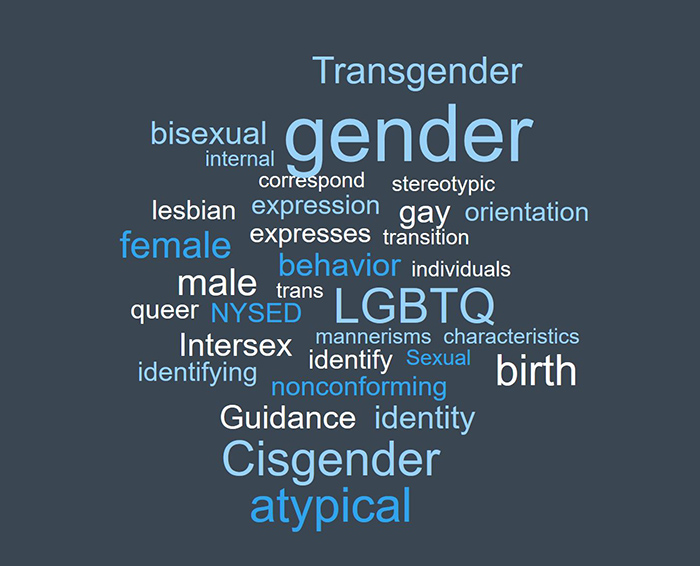
The Church of Jesus Christ of Latter-day Saints has not said much about “the bathroom controversy,” although spokesman Eric Hawkins said to LDS Living that a middle way should be and could be found. He called for calm and logic as well as compassion.
What is the “Bathroom Controversy” About?
This spring, the U.S. Department of Education’s Office for Civil Rights and the U.S. Department of Justice’s Civil Rights Division issued a “Dear Colleague” letter to school administrators about transgender students’ rights and schools’ legal obligations under Title IX of the Education Amendments of 1972.
This letter emphasizes that it is “significant guidance” that does not add requirements to existing laws.
The U.S. Department of Education, Office of Elementary and Secondary Education, Office of Safe and Healthy Students, also published a booklet called, “Examples of Policies and Emerging Practices for Supporting Transgender Students.” The booklet, just 18 pages including notes, contains information meant to ensure the safety and comfort of transgender students.
The booklet states,
“It has come to ED’s attention that many transgender students (i.e., students whose gender identity is different from the sex they were assigned at birth) report feeling unsafe and experiencing verbal and physical harassment or assault in school, and that these students may perform worse academically when they are harassed. School administrators, educators, students, and parents are asking questions about how to support transgender students and have requested clarity from ED.”
The booklet contains examples of what schools in various states are doing without specifically endorsing them.
In addition to the letter and the booklet, President Obama announced that state educational systems receiving federal funds which fail to comply with the guidelines could expect lawsuits against them filed by the federal government.
Eleven states (including Utah) have refused to comply, while many other states have already implemented the guidelines. Controversy rages online and in the press.
The number-one concern people have raised is the safety and comfort of girls and women in what used to be single-gender bathrooms and facilities. Because of the controversy, this issue is heading to the Supreme Court.
A New Vocabulary

The Emerging Practices booklet includes a glossary, reproduced here for those of us for whom the multi-gendered world is new. Vocabulary is fluid and influenced by slang and culture, but this basic list can help.
- Gender identity refers to a person’s deeply felt internal sense of being male or female, regardless of their sex assigned at birth. (Washington State Guidelines)
- Sex assigned at birth refers to the sex designation, usually “male” or “female,” assigned to a person when they are born. (NYSED Guidance)
- Gender expression refers to the manner in which a person represents or expresses gender to others, often through behavior, clothing, hairstyles, activities, voice or mannerisms. (Washoe County Regulation)
- Transgender or trans describes a person whose gender identity does not correspond to their assigned sex at birth. (Massachusetts Guidance)
- Gender transition refers to the process in which a person goes from living and identifying as one gender to living and identifying as another. (Washoe County Regulation)
- Cisgender describes a person whose gender identity corresponds to their assigned sex at birth. (NYSED Guidance)
- Gender nonconforming describes people whose gender expression differs from stereotypic expectations. The terms gender variant or gender atypical are also used. Gender nonconforming individuals may identify as male, female, some combination of both, or neither. (NYSED Guidance)
- Intersex describes individuals born with chromosomes, hormones, genitalia and/or other sex characteristics that are not exclusively male or female as defined by the medical establishment in our society. (DCPS Guidance)
- LGBTQ is an acronym that stands for “lesbian, gay, bisexual, transgender, and queer/questioning.” (LAUSD Policy)
- Sexual orientation refers to a person’s emotional and sexual attraction to another person based on the gender of the other person. Common terms used to describe sexual orientation include, but are not limited to, heterosexual, lesbian, gay, and bisexual. Sexual orientation and gender identity are different. (LAUSD Policy)
What are the Guidelines?

This bullet-point list is not exhaustive. Read the actual letter and booklet for further clarity. The booklet gives examples of how schools in various states are implementing the guidelines.
The letter first defines “transgender” as “those individuals whose gender identity is different from the sex they were assigned at birth. A transgender male is someone who identifies as male but was assigned the sex of female at birth; a transgender female is someone who identifies as female but was assigned the sex of male at birth.”
- A school must not treat a transgender student differently from the way it treats other students of the same gender identity.
- As soon as a student or parent “notifies the school administration that the student will assert a gender identity that differs from previous representations or records, the school will begin treating the student consistent with the student’s gender identity.”
- There is no medical assessment or treatment requirement necessary for the student.
- Transgender students must be given “equal access to educational programs and activities even in circumstances in which other students, parents, or community members raise objections or concerns. ([The] desire to accommodate others’ discomfort cannot justify a policy that singles out and disadvantages a particular class of students.)” “If sex-based harassment creates a hostile environment, the school must take prompt and effective steps to end the harassment, prevent its recurrence, and, as appropriate, remedy its effects.”
- “School staff and contractors will use pronouns and names consistent with a transgender student’s gender identity.”
- “When a school provides sex-segregated activities and facilities, transgender students must be allowed to participate in such activities and access such facilities consistent with their gender identity.”
- “A school may not require transgender students to use facilities inconsistent with their gender identity or to use individual-user facilities when other students are not required to do so.”
- A school may make individual-user options available to all students who voluntarily seek additional privacy.
- When offering single-sex classes and activities, a school must allow transgender students to participate consistent with their gender identity.
- A school must allow transgender students to access housing consistent with their gender identity and may not require transgender students to stay in single-occupancy accommodations or to disclose personal information when not required of other students.
On the elementary school level, parents are the ones most often making the request to honor their child’s transgender identity. But at the high school level, it is often the student. Sometimes the parents don’t know, and the recommended practice is not to inform them. This is meant to help the student through a difficult gender transition warranting unconditional support at school.
Update: Where the Supreme Court Stands as of August 2016
Difficulties with Practicing New Bathroom Rules for Transgenders

The most difficult-to-practice guideline from the U.S. Department of Education is this one:
- Transgender students must be given “equal access to educational programs and activities even in circumstances in which other students, parents, or community members raise objections or concerns. ([The] desire to accommodate others’ discomfort cannot justify a policy that singles out and disadvantages a particular class of students.)”
The most-used statistic for the prevalence of transgenderism in American Society is 0.3%. That means that in a high school with 2,000 students there may be 6 who are transgender. This small number means that these students should be personally known within the student body, and that’s an advantage in protecting them, if students are taught compassion.
The overwhelming issue, both in schools and public places is supervision.
Minnesota parents sue when transgender girl (born male) harasses girls.
To assume that every single person among us has honorable intent is naive. There are sure to be transgressions. Recently, I became aware of girls in a state that has enacted the Title IX requirements in schools. These girls go home to use the bathroom during their lunch break.
They say that boys are in and out of the girls’ facilities all the time. Their complaints have been ignored by the school’s administration. This is a supervision problem, and that is the main concern of people who are against the transgender accommodation guidelines. With so few transgender students in a typical student body, this school could do a better job with supervision of their male students.
In public facilities, supervision is much more difficult and transgressions of trust much more possible. (Bathrooms in America’s national parks are now trans friendly.) Most of the recorded problems have had to do with voyeurism — where a male dressed as a female has entered a public facility to film or photograph girls or women in various stages of undress. These incidents have been few and far between, but a single photo or video can severely harm a person’s life.
Add to this the fact that changing one’s gender identity does not ordinarily affect one’s gender attraction. Thus, according to “Injustice at Every Turn: A Report of the National Transgender Discrimination Survey,” a survey of roughly 3000 trans-women, only 23% identified as heterosexual (attracted to men), with 31% as bisexual, 29% as lesbian, 7% as asexual, 7% as queer and 2% as “other.” Thus, a transgender female using facilities with females could easily be attracted to them while being biologically equipped as a male.
This reality only increases the fears of female victims of sexual assault. In America, one in four girls will have been sexually abused by the age of 18. That means that in our hypothetical high school of 2,000 students with a possible 6 transgenders, there may be 250 female victims of sexual assault. They are often traumatized for life, and imagination alone is enough to keep them completely out of a gender-neutral restroom or changing room.
Finding Middle Ground
The high school students shown in this video are taking a logical approach, trying to protect ALL students, not just transgender ones.
All of these students feel compassion toward the few transgender teens in their midst. They understand that many transgenders [experience] “serious acts of discrimination — events that would have a major impact on a person’s quality of life and ability to sustain themselves financially or emotionally.”
But they also have compassion for all the other students in their school, especially girls.
Is it possible to be kind to some people without rejecting others? Isn’t there a way for everyone to be safe and comfortable?
2018 read: The left wants to remove the right to conscience from the equation, thus negating religious rights.
Liberal magazine The Economist expresses reservations about the transgender movement in November 2018.
Making a Comment
Please note that comments for this article will be carefully and strictly curated. Only productive and constructive comments will be published. No matter what your opinion, it will be honored if your comment meets these standards.





